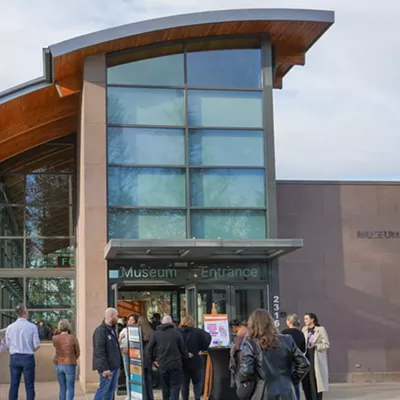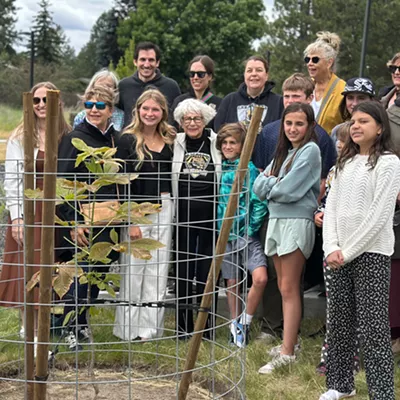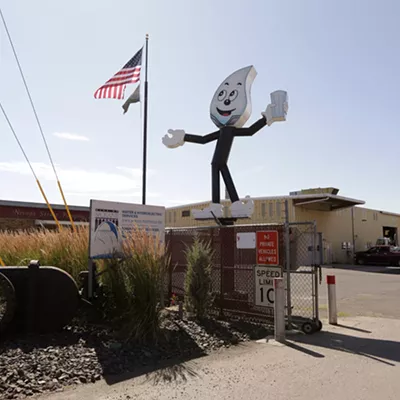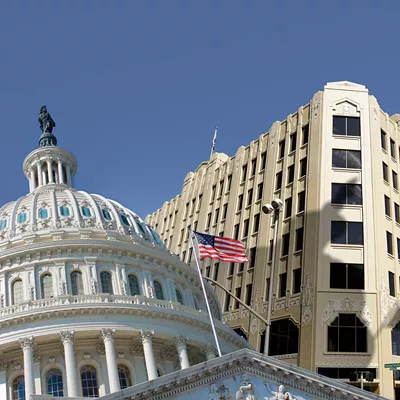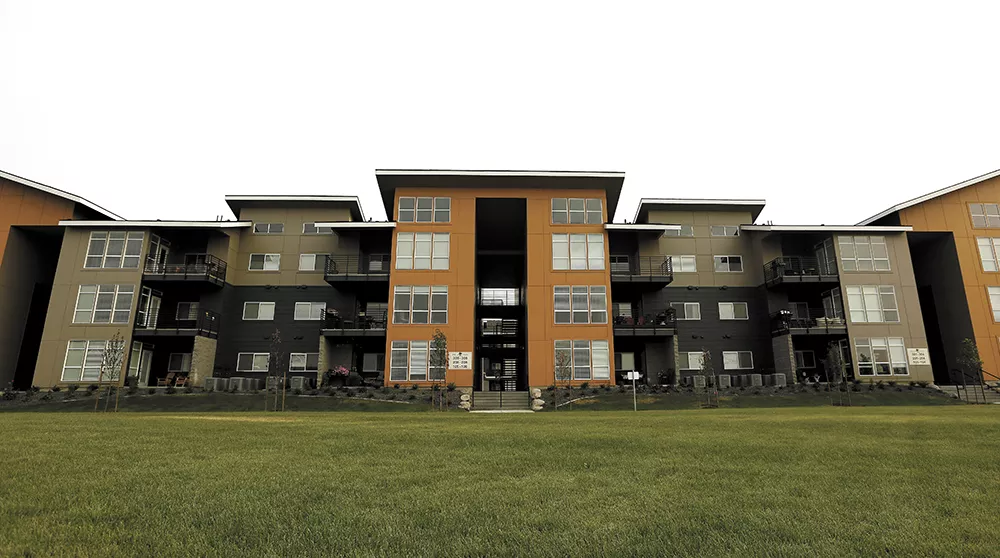
Bad luck caused Camille Pinson, her fiancé and her two kids to lose their apartment. The red-hot Spokane rental market is preventing them from finding another one.
Pinson had been through two weeks of hell, enduring a car accident, an emotional medical event and, finally, an apartment fire.
And with that, the two-bedroom unit they'd been living in was gone. She and her fiancé were effectively homeless. She sent her kids to live with family — her 7-year-old son to Oregon and her 14-year-old daughter to Idaho. She and her fiancé are crashing on a couch in the East Central neighborhood near the Hells Angels clubhouse. She doesn't want to be there.
Here's the problem: Even before the fire, the couple had been looking for five straight months for a new apartment to rent. By now, she says, she's spent more than $600 on rental application fees, but every single application has been met with rejection.
She says that she and her fiancé both have solid jobs. The biggest problem, she says, is her bad credit — dinged by medical debt and traffic tickets. These days, in this market, blemishes like poor credit, a criminal record or an eviction can doom a person's apartment search from the get-go.
Pinson is trying to make her family more attractive to landlords: She's added a cosigner with better credit, provided records showing they're paying off debt and underscored their desperation.
"Our apartment caught on fire," she tells property managers. "We're trying to find any place at all available. Can you please help us out?"
So far, no luck.
"If I could cry, I would," Pinson says. "I don't even have any tears left to cry right now. It's just been a whirlwind of shit."
The Inland Northwest has a lot of good things going for it right now. The recession is over. Unemployment is low. But finding a place to rent has become a nightmare. For the past two years, Spokane County's vacancy rate has been 1.4 percent or lower, according to an apartment survey conducted by the Washington Center for Real Estate Research at the University of Washington. In other words, for every 100 apartment units surveyed, only one or two were available at the time.
In Kootenai County, the vacancy rate is even lower — less than half a percent.
Arielle Anderson, a housing specialist at the nonprofit group SNAP (Spokane Neighborhood Action Partners), says it used to be worth an applicant's time to have a personal conversation with a landlord, to share the context of their bad credit or criminal records, "to talk about how their lives are different now, about how now they are going to make better choices."
But today that strategy has become largely ineffective.
"[Landlords] can just skip over that conversation because there's a million and a half people looking for the same unit," she says.
"Do I want to live in my car or do I want to live in a place with wires hanging from the ceiling and water dripping down down the wall?"
For years, the region's famously low cost of living has been one of the biggest selling points to attract new businesses and out-of-towners. But now even that might be in peril, as the basic laws of economics take hold: When a wave of high demand crashes against a low supply, prices shoot upward.
Though new rental units are rapidly being constructed, they're just as rapidly being gobbled up by the voracious demand for housing. The crisis has public officials debating what should be done to knock down barriers preventing more housing from being built — and what should be done to help renters survive the crunch.
In the meantime, for residents like Pinson, the struggle to escape the rental squeeze is maddening.
"Please message me if there is anything!" Pinson pleads in a recent Craigslist post. "At this point I am desperate!!!"
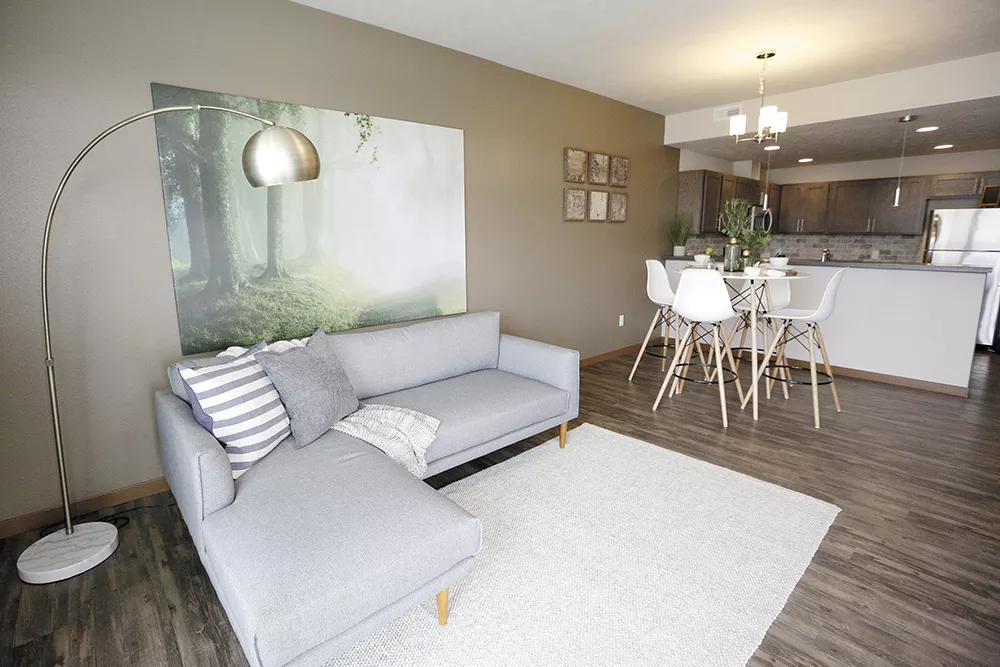
THE TIGHTENING
All property manager Kevin McKee has to do is click "post" for the deluge to start. It's just after 10 am in his Monroe Street office when he puts up a notice about a four-bedroom house renting for $1,237 a month on Zillow.
In less than 15 minutes, the first email requesting a tour blips onto McKee's desktop screen, filled with details about the renter's monthly income, credit score, profession and target move-in date. A posting on Craigslist, McKee says, would have brought out a response even faster.
"The number of calls you get on a vacancy is to the point where it is almost counterproductive," McKee says. "You spend five minutes on a phone call. You get 40 of them. ... When you're spending the whole day talking on the phone about the property, you don't get nearly as much time to show it."
The rental market has come a long way since the recession. Seven years ago, the vacancy rate was five times what it is today. You might have guessed that the demand for rentals would have boomed during the downturn, as homeowners lost their houses and jobs.
Instead, the opposite happened to the rental market: People started doubling up or moving back in with their relatives. Young people continued to live with their parents. Back then, landlords were the desperate ones; they'd cut prices or offer the first month of rent for free.
But as the recession ended and the economy slowly began chugging forward again, the number of available units started to decrease. By 2014, vacancies had fallen below pre-recession levels.
"We were all praising, 'Hallelujah, here they come!'" says Ed Cushman, president of the Landlord Association of the Inland Northwest.
In the past two years, rental vacancy rates nationwide have fallen to the lowest they've been in three decades — and Spokane County is five times tighter than that. It's even harder to find a rental here than in King County, where rents have skyrocketed to absurd heights.
As a general rule, the better the job market is in a region, the more people can afford to rent apartments instead of doubling up, and the more people flock there for work.
"If they're coming in for new jobs, they're more likely to rent than to buy," says Kim Sample, vice-president of multifamily operations for real estate developer NAI Black. And right now, the Inland Northwest is hovering around full employment.
A year ago, it seemed like rents were holding steady, despite high demand. No longer.
Like a rubber band pulled more and more until it suddenly snaps, the apartment market survey shows that the average monthly rent of a Spokane apartment unit jumped from $660 in March 2016 to $913 in March 2017 — an eye-popping 38 percent increase in a single year. (King County rents still reign supreme, at $1,617 per month.)
The apartment survey, used to estimate both vacancies and rent, is an imperfect tool. Only some landlords respond to the survey, and it doesn't include the newest apartment complexes. But it's clear that rents have been increasing rapidly, no matter how you look at it.
"The rent increases have been more than I've ever seen," says McKee, the local property manager.
It's not just the rent, either. It's the extras.
Browne's Addition renter William Beyer says it took him nearly a year to find a new apartment in his price range. In the meantime, he says, he watched his one-bedroom apartment rent and utility fee jump from $565 to $665. The salt in the wound was the additional $75 for renting month-to-month.
"We were trying to move out anyway," Beyer says. "Then the rent increase hit and we were like, 'We got to get out of here.'"
Anderson, the housing specialist, says that a typical damage deposit had been equivalent to one month's rent. Now, she says, some landlords are asking for deposits equivalent to the first and last month's rents, and slapping a hefty nonrefundable fee on top of it.
"Then what you're looking at for a $600 rental, for initial move-in, would be $1,800," Anderson says.
After all, in the tussle between the landlord and tenant, a low vacancy rate hands extraordinary power to the landlord. Think of the store owner who can jack up the cost of flashlights when a hurricane's coming.
One Zillow sale listing this spring even referred to a "fixer upper" West Central duplex rental with long-term tenants as a "cash cow," advertising that "repair and maintenance can be deferred" because of the "extremely low vacancy" rate.
That has put tenants on edge, says Terri Anderson, a community organizer for the Tenants Union of Washington State, which seeks to organize tenants and educate them about their rights. Fourteen people — the most she's ever seen — showed up for a tenant-counseling clinic last week.
There are laws to protect tenants. Refusing to rent to someone because of a disability, for example, is illegal. But in this market, tenants have little leverage, and in these conditions, it's hard to pressure landlords to take proper care of their property.
Terri Anderson unspools a list of complaints she's heard over the past year, including broken stoves, shattered windows, faulty ventilation, water dripping through light fixtures, raw sewage bubbling up from toilets, and mushrooms growing on the carpet.
Normally, she says, tenants can threaten to move if, for instance, a landlord refuses to make repairs. Today, she says, they're faced with a stark choice.
"Do I want to live in my car or do I want to live in a place with wires hanging from the ceiling and water dripping down down the wall?" she says.
Some landlords, like McKee, aren't celebrating. He's concerned that companies could refuse to locate in Spokane if there's not enough housing. Lately, he's worried about the human cost. He's seen the relationship between landlord and tenant turn sour, as desperation gives way to anger.
"It's not healthy. It's not good for anybody," McKee says about the current market. "These people are our neighbors. My daughter's friends. We're all on the same team."
The good news?
The fact that it's so much easier to make money on rental units right now is driving developers to finally build a lot more of them.

NEW MOMENTUM
"Dense multifamily development" may not be the first thing that comes to mind when you think of Spokane Valley. But that's where the Bella Tess, one of the largest apartment complexes to come on the market in the past year, has been built.
What was once a vacant lot on Indiana Parkway east of the Spokane Valley Mall has been filled with three-story, garden-style apartment buildings, painted with bold blues and reds.
"We want to create a resort-type feel here," says Dina Khala, regional property manager for Greystar Spokane. She walks through the welcome center and to the model unit, bragging about the central heating and AC, the ping-pong tables, the exercise room and the modern design.
"This is the fastest we've leased up a property," says Khala. "And we're also achieving higher rents than ever."
One-bedroom apartments here start at $950 a month and go up to $1,150. All told, 204 units have been built here. And this is just the start.
Two cranes loom in the skyline nearby.
One crane is building the second phase of the Bella Tess — 196 additional apartment units. A third phase may follow, depending on the apartment building's success. The other crane is constructing the 132-unit Riverhouse senior living apartments, funded by a real estate investment company from Arizona.
That's what's supposed to happen: There's a high demand for a product, that product gets expensive, and so investors climb over themselves to offer more of it. Eventually, that drives down prices.
More than 1,900 apartment units were built in Spokane County in 2015 and 2016, according to a tally from Valbridge Property Advisors. That number is only growing. As of this April, more than 2,100 new units are permitted and under construction — and nearly 2,200 more have been proposed.
Some of that is affordable housing, aided by tax credits. Catholic Charities and Volunteers of America have built hundreds of apartment units to house the homeless — and have an additional 300-plus on the way.
Others are much pricier projects, like the Falls, a high-end luxury development on the former YWCA property downtown that will include 120 apartments. "It's going to be the best product coming online in Spokane ever," says Sample, of NAI Black.
Evidence of the boom is everywhere. When the Cowles Company — owners of the Spokesman-Review and the downtown River Park Square shopping mall — bought the Macy's building downtown, it didn't simply turn the property into another stack of retail stores. Instead, the proposed "M" building will include retail stores and office space, but also more than 100 apartment units.
Sample says several clients of hers have sold their properties in Seattle, and invested in multifamily properties in Spokane.
Even developers who had been wary of multifamily projects have leapt into the market.
Dave Black, 59, first took over his father's real estate development company when he was 26, but had long ago given up on building apartment complexes. "I never could make them work," Black says.
But he's seen what's happened to rents lately. They've doubled since the '80s. And now he's back in the game, developing the Palouse Prairie Apartments on the upper South Hill. Two buildings are done already — featuring wood-plank floors and 9-foot ceilings — and seven more are on the way.
Projects that may have seemed too risky or pricey to develop in Spokane's market suddenly make sense. Developer Ron Wells' plan to turn the vacant Ridpath Hotel into a series of apartment units, including tiny "microapartments," may have seemed iffy in 2013, back when the average apartment rent was just over $600. But today?
"It's much more feasible now," Black says. "There's really going to be demand for smaller units at a lower overall price."
Among some observers, there's a sense that, perhaps, the apartment boom isn't just a bubble. They see a generational shift as driving some of the demand. Today's young people are less likely to dive straight into homeownership as they once were, local real estate experts say.
"They don't want to fix the roof and mow the lawn and spend their money on some furnace that goes bad," Black says. "They want to go out and live their life."
This generation doesn't want to be tied down, the thinking goes. They want flexibility, Sample says, and they want the sort of modern interiors and upgraded amenities that they couldn't afford with their first home purchase.
It's why the marketing campaign for the Bella Tess apartments uses Facebook ads and Instagram ads to hit millennials.
"They are wanting something different. They are wanting something upscale," says Khala, the Greystar Spokane property manager. "They want something they can show off."
All combined, that means young people are still packing the rental market — and demanding fancier options.
The question is whether all these new buildings will be enough to meet the new demand. As quickly as new apartments have been opening in the Spokane region, the vacancy rate has still mostly refused to budge.
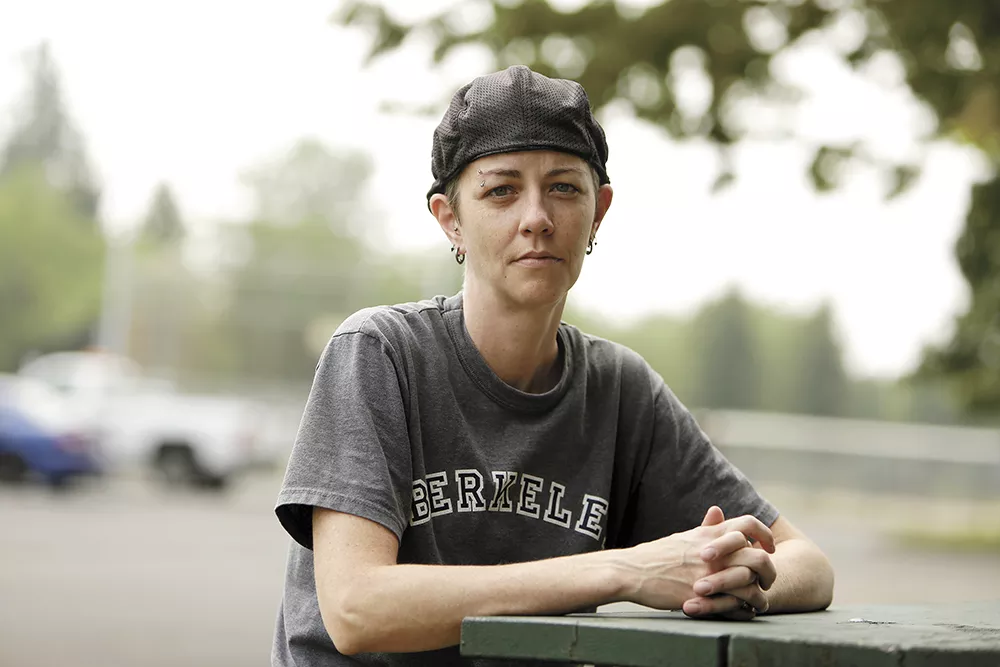
APARTMENT BLOCKS
Despite the boom, a few barriers continue to choke the growth of new rentals and have limited their locations. To begin with, Spokane — like much of the country — has a construction labor shortage. The recession blew a massive hole in the construction industry. Unemployed construction workers found new careers.
"Given the length of the downturn, they've retrained. They've left the area," says Joel White, president of the Spokane Home Builders Association. "There's not enough labor. Not enough electricians. Not enough framers."
The single-family home market is just as hot as the apartment market right now. Combine the two, and the construction workers who remained have more work than they can handle.
White says one of his association's members called him to complain that the framers the contractor had been working with had bailed to work on a bigger project. But even major projects, like the Palouse Prairie Apartments, have had to wait in line for plumbers.
"We've told all of our young people they are failures if they go into trades," White laments.
It's not just the speed of building apartments that has been hampered, he says. It's the location.
In Washington state, large apartments can't legally be built in rural areas. Al French, a developer and Spokane County commissioner, points to the Washington State Growth Management Act, which prevents dense development, like apartment complexes, from being constructed outside a defined boundary. The intent was to concentrate development in a smaller area, instead of simply allowing sprawl to spill out wherever vacant land is the cheapest.
The county has repeatedly attempted to expand that urban growth boundary. Sprawl, after all, has a hidden price tag: Longer commutes and more expensive infrastructure costs.
But French says that the availability of large, vacant tracts of residentially zoned land has dwindled. The prospect of more massive, single-family home housing developments, like south Spokane County's Eagle Ridge — where he lives — has been made more difficult, he says. A lot of people in Spokane County, French says, don't want to live packed together.
"We don't want to hear the neighbor sneeze and say 'Gesundheit,'" French says. "We like to have privacy."
The city of Spokane has pushed in the opposite direction, aiming to concentrate development in the city center. Four years ago, the city council voted to pull back its multifamily tax exemptions from the outskirts of the city to concentrate them in the core.
"We need a good plan," says Jonathan Mallahan, director of the city's neighborhood and business services department. "We could build all sorts of housing and not solve this problem. It has to be in the right place, and it has to be the right type of housing."
Yet the city has a number of other hurdles that developers have to navigate, including height restrictions, parking minimums, traffic studies and — in particular — neighborhoods ready to rise up in revolt at the prospect of a massive apartment building next door.
Major projects in Spokane that could have dramatically opened up the rental market have been defeated by angry neighbors.
Big-name developer Harley Douglass wanted to build more than 600 new apartment units in the high-income Indian Trail neighborhood, in a largely vacant zone on the outskirts of the city's borders. The proposal was met with stiff resistance from neighbors who worried about traffic, park space, crowded schools and neighborhood character, and ultimately, the city council unanimously rejected the zoning change that would have made the project possible.
Similarly, the backlash over the demolition of a historic home in Browne's Addition — to make room for an apartment complex and townhomes — caused the city council to put a moratorium on all demolition while the neighborhood pursues a historic district designation, which could further limit development.
Mallahan says the city has been working on ways to build more housing within city limits, though he acknowledges that progress has been slow. The city, he adds, is planning to offer developers customized development plans for smaller pieces of land, handing them the ability to construct Kendall Yards-style townhomes — or other dense developments — in more areas of the city.
The city is also looking at loosening height restrictions downtown, in exchange for guarantees that additional floors will be residential, Mallahan says. It's expanding its multifamily tax exemption program to improve longer-term incentives by relaxing some of the affordable housing requirements attached to the incentives.
"If we can't find a way to be more dense in Spokane, rental prices will continue to rise," Mallahan says. "If we don't react in a way that leads to the creation of affordable and quality housing, this problem gets worse over time."
WAITING OUTSIDE
In the middle of this building boom, Terri Anderson, with the Tenants Union, wants to see more restrictions on landlords. She wants required rental inspections, and wants the city to end "no-cause evictions," like Seattle did long ago.
"When you allow for a no-cause [eviction], then it can be arbitrary," she says. "Tenants are living at an edge of a cliff, not knowing what applies to them."
Spokane's city council took up one housing issue earlier this year: Concerned that landlords were refusing to rent to people with federal housing vouchers, the council passed an ordinance banning landlords from discriminating based on someone's source of income.
Some experts, however, warn that new regulations and restrictions can backfire, stymieing the sort of new construction that could reduce rents. Rent control — capping the amount that landlords can charge for certain units — is particularly despised by economists.
"It's the closest thing to dropping a nuclear bomb on a city that you can get," says James Young, director of the Washington Center for Real Estate Research. "It really is."
In general, he says, investors and developers want predictability. Big policy swings can scare them off. "Regardless of what your politics are, sometimes doing nothing is the best thing," Young says.
But such patience is difficult for those still looking for a home.
Hayden Powell remembers what it felt like to lose consciousness as her attacker — the woman she loved — tried to choke her out. When she fled her apartment in Pullman, she was thinking only of her safety, not her rental history. Spokane was supposed to be a new start.
But nearly every night for the past 16 months, she's curled up with blankets and pillows in her crimson Subaru, trying to sleep.
"It's extremely uncomfortable," Powell says. "I'm 6 feet tall. That hurts. I'm not exactly a spring chicken. I'm 39."
She has a job, though cleaning houses doesn't pay much. She has a military record, though she was discharged from the Air Force because she's gay.
"I'm a landlord's dream," Powell says. "I'm quiet. I'm clean. I'm organized."
But she says that, since she owes thousands of dollars to the landlord of the Pullman apartment she fled from, no one has been willing to rent to her.
The social services system is supposed to fix issues like this: Powell says she spent four months waiting on a list to take advantage of SNAP's Rapid Re-Housing program, which helps with deposits and rent for three months.
But in this market, being part of the Rapid Re-Housing program can even backfire, she says.
"It almost puts a negative mark on me," Powell says. "I've heard from landlords or receptionists, 'Oh, we haven't had the best luck with those renters.'" ♦
DANIEL WALTERS covers Spokane City Hall, business and development for the Inlander. Since 2008, Walters has followed house-flippers sniffing out foreclosures during the recession, dug into the mess that dogged the vacant Ridpath Hotel for nearly a decade, and explored the dramatic economic disparity between the swanky Kendall Yards and the low-income West Central neighborhood that borders it. He currently rents a one-bedroom apartment in Browne's Addition. Reach him at danielw@inlander.com or 509-325-0634 ext. 263.






